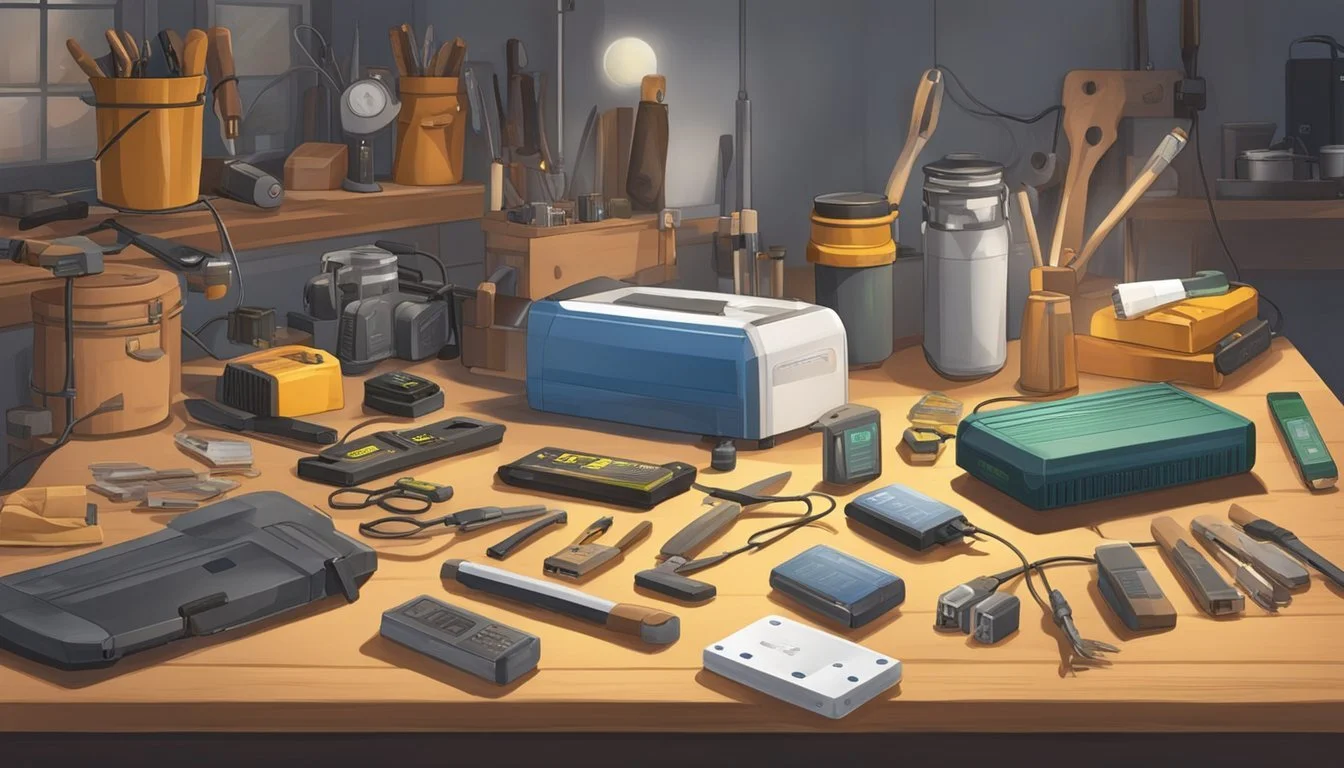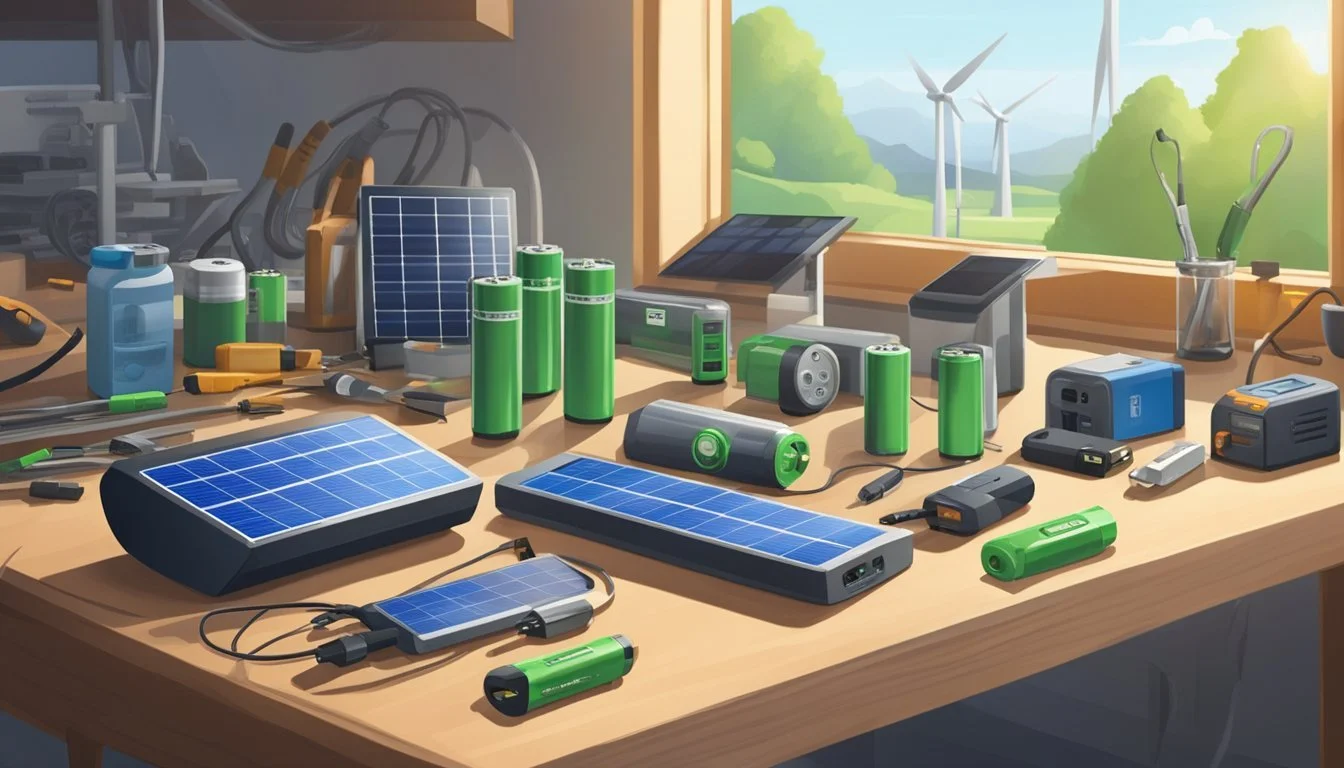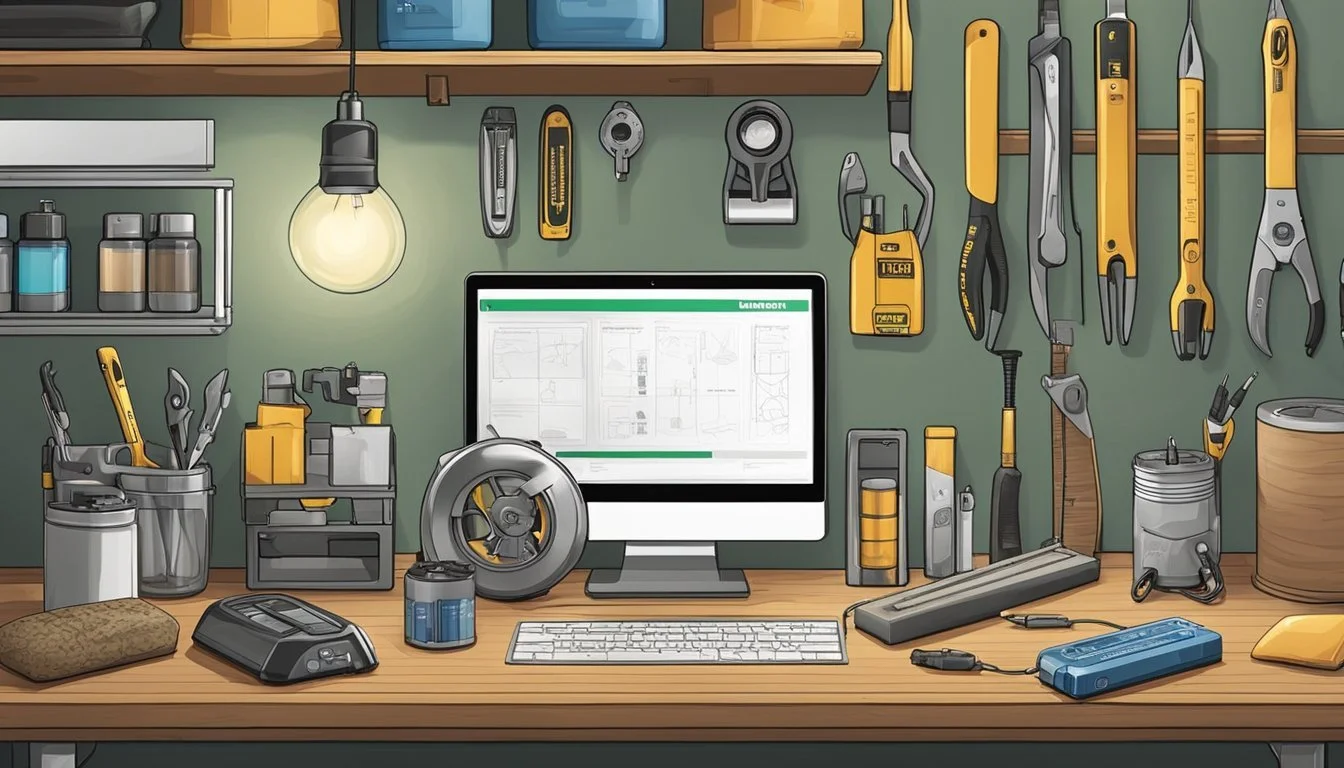The Ultimate Guide to Rechargeable Batteries and Chargers
Powering Homestead Tools and Devices Efficiently
Rechargeable batteries have become a cornerstone for sustainable living and are particularly valuable for those on a homestead, where self-reliance and efficiency are key. They serve as a core component to power various tools and devices off the grid, reducing the need for disposable batteries which can be both costly and environmentally damaging. The right rechargeable batteries paired with effective chargers can ensure that essential equipment stays operational, from flashlights and radios to fencing and surveillance systems.
Choosing the best rechargeable batteries involves understanding their capacity, longevity, and compatibility with devices. For instance, certain high-capacity batteries like the Panasonic Eneloop Pro offer extended usage time, ideal for high-drain homestead equipment. While for budget-conscious individuals, alternatives such as Ladda Rechargeable Batteries provide a balance between cost and performance. Similarly, lithium rechargeable batteries, known for their long life and stability, can be an excellent choice for devices that require a more consistent power output.
When it comes to chargers, selecting one that matches the battery type is crucial. Features such as smart charging, which prevents overcharging, and support for multiple battery sizes, enhance versatility and safety. Chargers that adapt to various power sources, including DC outlets and USB, can be especially practical on a homestead where power supply options might be limited. Smart chargers like Xtar, which are compatible with a range of battery types and sizes, ensure that batteries are charged efficiently and ready for use when needed.
Understanding Rechargeable Batteries
In the context of homesteading, understanding the workings and advantages of rechargeable batteries is crucial for optimal energy use and sustainability. This section explores the fundamental concepts of battery technology, their significance in a self-sufficient lifestyle, and a comparison with their disposable counterparts.
Battery Basics: Cells and Types
Rechargeable batteries, the cornerstone of portable power in tools and devices, rely on a chemical reaction to store and release electricity. The basic unit of a battery is the cell, which consists of an anode, cathode, and an electrolyte. There are several types of rechargeable batteries:
Nickel-Metal Hydride (NiMH): Known for a good balance between cost and performance, NiMH batteries do not suffer from memory effect like their NiCd counterparts.
Lithium-Ion (Li-Ion): These batteries offer high energy density with longer lifespans and are common in modern electronics due to their light weight and efficiency.
The Role of Rechargeable Batteries in Homesteading
Rechargeable batteries are an essential component for homesteaders, fostering energy independence and reducing waste. They can be used in a multitude of tools and devices, allowing for the continuous operation of essential equipment such as solar light systems and power tools. Their ability to be recharged makes them a reliable option for maintaining productivity without frequent purchases or disposal concerns.
Comparing Rechargeable and Disposable Batteries
When it comes to evaluating rechargeable versus disposable batteries, several factors come into play:
Voltage: Rechargeable batteries typically start at a lower voltage but maintain consistent output, whereas disposables can begin at a higher voltage that decreases over time.
Cost-effectiveness: Though rechargeable batteries have a higher upfront cost, they can be recharged hundreds of times, leading to long-term savings and environmental benefits.
mAh Ratings: Disposables often have lower milliampere-hour (mAh) ratings compared to rechargeable lithium batteries, which means rechargeables can last longer on a single charge. Lithium rechargeable batteries in AA size, for example, can range from 2,700 to 3,400+ mAh.
Chargers and Charging Techniques
When homesteaders choose the appropriate chargers for their tools and devices, they ensure operational efficiency and battery longevity. Charging techniques can prolong the life of the batteries and safeguard against potential damage.
Selecting the Right Battery Charger
For optimal performance, one must select a battery charger that matches the battery type. Compatibility is crucial; voltage and current specifications of the charger should align with the battery's requirements. USB charging offers convenience for devices like smartphones, whereas specialized chargers are needed for tools with higher power needs.
Voltage Match: Ensure the charger outputs the correct voltage for the battery.
Current Supply: Check if the charger provides sufficient current for efficient charging.
Understanding Charging Time and Overcharging Risks
Charging time is influenced by the battery's capacity and the charger's capabilities. Users should be aware of the recommended charging time specific to their batteries to prevent overcharging, which can lead to reduced battery life or potential hazards.
Typical charging times range from 3 to 5 hours for depleted rechargeable batteries.
Chargers with automatic shut-off features can minimize the risk of overcharging.
Trickle Charge and Maintaining Battery Health
A trickle charge can be applied to keep a battery at its full charge without the dangers of overcharging. This low-current charge maintains the battery's charge level and is beneficial for batteries in infrequent use or in storage.
Maintaining Charge: A trickle charger supplies a small amount of current to keep batteries ready for use.
Preventing Damage: It also avoids the stress of regular full charge cycles on battery health.
Power Tools and Equipment
In the realm of homesteading, selecting the right battery-powered tools and understanding the maintenance of their power sources is crucial. Efficiency and longevity are the cornerstones of sustainable operations.
Battery-Powered Tools for Homesteading
Rechargeable battery-powered tools have become staples in the homesteading toolkit. They are crucial for a variety of tasks, from land management to construction. A chainsaw, for instance, may be employed in tree maintenance and managed forestry, and is often powered by a high-voltage battery for enhanced performance. Drills are indispensable for building and repairing infrastructure, and their effectiveness is maximized when paired with long-lasting Lithium-ion batteries that offer a quick recharge time. Meanwhile, a battery-operated tractor can provide clean energy for plowing fields without the exhaust emissions associated with traditional diesel engines.
Here is a list of common power tools and their typical voltage needs:
Chainsaw: 40V-54V
Drill: 12V-20V
Tractor: Dependent on model; larger voltage for more demanding tasks
Maintaining Your Tools' Batteries
Effective maintenance of tool batteries is fundamental for prolonging their service life and ensuring that homesteading tasks do not come to an abrupt halt. Users should store batteries in cool, dry places to minimize wear and maintain charge levels between 30% to 50% when not in use for extended periods. Regular cleaning of contact points on both batteries and tools ensures efficient energy transfer and reduces the risk of power interruption.
Here's a maintenance checklist for keeping your tools' batteries in peak condition:
Charge Regularly: Avoid letting batteries deplete fully before recharging.
Clean Contacts: Use a dry cloth to wipe down battery contacts and tool connectors.
Proper Storage: Store in a cool, dry place away from direct sunlight.
Regular Inspection: Check for any signs of damage or wear every few months.
Homesteaders should refer to specific tool manuals for detailed battery care instructions, as each type may have unique requirements.
Sustainable Energy Sources
Homesteaders require reliable, renewable energy sources to maintain their independence from the grid. This guide focuses on leveraging the environment's natural processes to keep batteries charged and tools ready.
Harnessing Solar, Wind, and Fire for Charging
Solar Power: An abundant and clean energy source, solar power harnesses the sun's energy using solar panels. These panels can be installed on Homestead roofs or in open fields, capturing sunlight and converting it to electricity. This energy is especially beneficial for charging batteries because it is a direct source of electricity that can be harnessed even in remote locations.
Advantages: Abundant, renewable, low maintenance
Considerations: Requires sunlight, initial setup cost
Wind Energy: Wind turbines convert the kinetic energy from the wind into electrical power. Small-scale turbines can be a feasible addition to a homesteader's energy mix, especially in windy areas.
Advantages: Renewable, works day and night
Considerations: Requires consistent wind, noise could be a concern
Fire: Using thermoelectric generators, homesteaders can convert heat from fire into electricity. This method can complement solar or wind solutions, providing a steady power source when other sustainable sources are minimal.
Advantages: Reliable, works in various weather
Considerations: Less efficient, requires heat source
Setting Up an Off-Grid Battery Bank
Battery Bank Configuration: A cornerstone of sustainable energy systems, a battery bank stores the energy collected from sustainable sources like the sun and wind. Typically, these batteries form a part of an off-grid system and are charged through solar panels or wind generators.
Composition: Deep-cycle batteries are preferred for prolonged energy release.
Voltage: Common configurations include 12V, 24V, or 48V systems, depending on the required power load.
Sustainability and Efficiency: Strategic setup of the battery bank is crucial for maximizing energy storage and efficiency. The choice of batteries is often dictated by the balance between cost, longevity, and capacity.
Materials: Recent advancements suggest sodium-ion batteries as a sustainable alternative, utilizing accessible materials compared to traditional lithium-ion batteries.
Configuration: Proper sizing and maintenance of the system ensure longevity and consistent power supply.
Homesteaders who adopt these sustainable energy solutions empower themselves with a dependable, environmentally friendly power source, securing energy autonomy for their homes and tools.
Homesteading Essentials and Gear
When it comes to homesteading, the right gear can vastly improve productivity and efficiency. Essential equipment, along with their maintenance and organization, plays a crucial role in the day-to-day operations of a homestead.
Essential Gear Powered by Rechargeable Batteries
Garden Tools:
Electric Trimmer: For precise cutting and shaping of garden plants.
Cordless Drill: Useful for building and maintaining garden structures.
Maintenance Equipment:
Power Washer: For cleaning wooden surfaces and farm equipment.
Portable Vacuum: Key for keeping the shed and living areas free from debris.
Woodworking and Construction:
Circular Saw: Cuts wood for building or repairs.
Rechargeable Hammer Drill: Drills into wood and masonry with ease.
Tool List:
Rope & Tie-Downs: For securing loads and makeshift repairs.
Knives & Axes: Cutting rope, processing wood, and general use.
Hammers: Driving stakes and nails in fencing and construction.
Note: Each piece of equipment should be accompanied by appropriate chargers and extra batteries to ensure continuous usage.
Organizing and Storing Your Equipment
Shed Organization:
Shelving Units: Employ multiple shelves to keep tools accessible.
Labeled Bins: Sort small items like screws, nails, and batteries.
Care and Maintenance:
Regular Cleaning: Schedule for tools to prevent buildup of grime.
Inspection Routine: Check battery levels and equipment condition before and after use.
Supplies Storage:
Cool, Dry Place: Store batteries and chargers to prolong life.
Separate from tools: Keep chargers and batteries in a dedicated space to avoid confusion.
By maintaining a well-organized gear system and understanding the need for portable power solutions, homesteaders can ensure that their essential tools are always ready for use.
Practical Tips and Best Practices
In this section, readers will gain insight into effective methods for extending the useful life of batteries and ensuring their safe handling. These tips are tailored for homesteading tools and devices to help maintain durability and performance.
Maximizing Battery Life and Usage
To maximize a battery's effective lifespan, one should only use chargers that are compatible with their specific battery type. This prevents damage and maintains the battery's integrity. For lithium batteries, it's recommended to initiate a charge cycle before they dip below 20% to slow down wear on the charge cycles. Here's a quick reference:
Always use the official or a compatible charger.
Start charging:
At 20-30% for lithium-ion batteries
At 30-40% for NiMH and NiCd batteries
Safety and Handling of Rechargeable Batteries
When dealing with rechargeable batteries, safety precautions are paramount. They should never be left to charge unattended due to the risks of overheating, which in rare cases can cause a battery to catch fire. One should always wear safety glasses when performing maintenance on batteries to protect their eyes. The surrounding environment should be dry and cool to minimize risk and augment battery longevity. Here's a summarizing table:
Action: Charging; Safety Measure: Monitor closely; Do not overcharge
Action: Maintenance and Repair; Safety Measure: Wear safety glasses; work in a well-ventilated, dry area
Action: Storage; Safety Measure: Keep in a cool, dry place away from flammable materials
By following these guidelines, homesteaders ensure their batteries are charged effectively and handled with the utmost safety.
Portable Charging Solutions
In the realm of homesteading, reliable power sources are indispensable. Portable charging solutions offer the flexibility required to keep tools and devices operational throughout the day, regardless of one's location on the property.
Battery Packs for On-the-Go Energy
Portable battery packs, varying in size and capacity, provide a versatile way to harness energy while on the move. When assessing a battery pack, one should consider the mAh (milliampere-hour) rating, which serves as an indicator of the energy capacity. Higher mAh ratings denote a longer-lasting charge, essential for high-demand homesteading tools. For example, battery packs featuring a 10,000mAh capacity can efficiently charge smartphones, tablets, or even smaller tools, while larger capacities, such as a 24,000mAh power pack, cater to more extensive energy needs.
Battery Type: Rechargeable batteries, commonly found in AA or AAA sizes, are often integrated with power packs for easy replacement.
Portability: Consider the weight and dimensions of the power pack, especially if one requires it regularly throughout the day.
Durability: A power pack used in a rugged homesteading environment should withstand the elements and potential impacts.
Understanding USB Ports and Outputs
The kind of USB port on a power pack greatly impacts compatibility and charging efficiency. A USB-C PD (Power Delivery) port offers a significant advantage with its ability to charge larger devices like laptops. Additionally, multiple USB outputs allow for the simultaneous charging of several devices, which is a considerable time-saver.
USB-C Ports: Newer and more efficient, often enabling faster charging and a more extensive range of compatible devices.
Micro-USB Ports: Older but still common, mainly used for charging the power pack itself or older devices.
Output Wattage: A higher wattage, such as a 20W dual USB-C PD output, ensures quicker charging for devices, crucial when time is a constraint on the homestead.
USB Port Type: USB-C PD; Common Usage: New devices, fast charging, data transfer; Charging Speed: Fast
USB Port Type: Micro-USB; Common Usage: Older devices, power pack charging; Charging Speed: Moderate
USB Port Type: USB-A; Common Usage: Wide range of devices, backward compatibility; Charging Speed: Varied
Through strategic selection and use of portable battery packs and understanding the intricacies of USB ports and outputs, homesteaders can substantially enhance their efficiency and productivity.
Consumer Insights and Product Recommendations
In this section, the focus is on presenting specific, highly-rated rechargeable batteries and chargers that cater to homesteading tools and devices, followed by understanding customer feedback and brand reliability for these products.
Top Rated Rechargeable Batteries and Chargers
Panasonic Eneloop Pro batteries stand out in the AA and AAA categories for their longevity and reliability. They are often recommended for high-drain electronics due to their impressive performance. For cost-effective options, AmazonBasics rechargeable batteries provide a balance between quality and affordability.
AA Batteries: Panasonic Eneloop Pro, AmazonBasics
AAA Batteries: Panasonic Eneloop Pro, AmazonBasics
Chargers are equally important; the Panasonic BQ-CC55 charger is efficient and user-friendly. Alternatively, the EBL charger is known for its versatility, being able to charge multiple sizes and types of batteries.
Chargers:
Panasonic BQ-CC55
EBL
Brand: Panasonic; Product Type: Batteries; Notable Feature: Low self-discharge
Brand: AmazonBasics; Product Type: Batteries; Notable Feature: Affordable
Brand: Panasonic; Product Type: Charger; Notable Feature: Smart charging indicator
Brand: EBL; Product Type: Charger; Notable Feature: Multi-battery capability
Customer Feedback and Brand Reliability
Customers frequently provide positive feedback on Panasonic Eneloop batteries for maintaining charge over time and offering reliability in various devices. EBL's charger often receives praise for its ease of use and the ability to charge different types of batteries simultaneously.
For brand reliability:
Panasonic is well-regarded for quality and durability.
AmazonBasics offers value for money in the realm of electronics, including rechargeable batteries.
EBL is commended for their versatile and cost-effective charging solutions.
Homesteaders looking for reliable power options often rely on user feedback found on platforms like Amazon, where customers provide real-world experiences with these products. Through a careful examination of this feedback, one gets to understand the efficacy and dependability of the products in a practical setting.
Adapting to Homesteading Life
Transitioning into homesteading requires a robust toolkit designed to handle diverse building, repairing, and farming needs. This toolkit paves the way for a successful adaptation to homesteading life, ensuring they have the necessary resources at their disposal to manage their homestead effectively.
Versatile Tools for Building, Repairing, and Farming
When it comes to homesteading, having a multi-functional set of tools can make the difference between a flourishing homestead and a formidable challenge. A staple gun is indispensable for quick fixes, from mending fabric tears to securing fencing. For precise work, a tape measure and tape ruler are essential for measuring distances and materials accurately before cutting.
A sawmill on the homestead expands their capabilities exponentially, allowing them to process lumber for construction projects which saves cost and increases self-sufficiency. A reliable combination wrench set becomes vital when they're dealing with machinery or farm equipment, ensuring they can tighten or loosen bolts of varying sizes with ease. Lastly, barrels serve multifunctional purposes, from rainwater harvesting to storing feed.
Building & Repairing: Staple Gun - Farming: Barrels
Building & Repairing: Tape Measure & Tape Ruler - Farming: Sawmill
Building & Repairing: Combination Wrench - Farming: Cleaner for Equipment Care
Building & Repairing: Level & Hanging Tools - Farming: Cutting Tools
Homesteading Skills and Using Tools Effectively
Homesteading is not just about having the right tools; it's about honing the skills to use those tools effectively. One must be adept at measuring and cutting materials for build projects, repairs, and daily maintenance tasks. Knowing how to properly clean and maintain these tools, using the appropriate cleaner and methods, will ensure their longevity.
Learning the intricacies of each tool is as important as the expertise in using them. A level is crucial for ensuring structures are constructed properly and stable. Additionally, the ability to efficiently utilize farming tools, from tractors to hand tools, directly impacts the productivity and sustainability of a homestead. Familiarity with the operation and maintenance of each tool underscores a successful adaptation to homesteading life.
Emergency Preparedness and Survival
In a survival situation, having reliable power sources and the right tools can make a critical difference. This section explores the essentials of maintaining a state of readiness with dependable energy storage and the necessary tools.
Dependable Tools and Devices for Emergencies
Rechargeable batteries act as the backbone of an effective emergency plan. They can be used to power essential devices such as flashlights and radios which are vital for maintaining communication and visibility when the power goes out. A well-prepared homestead should have a stockpile of AA and AAA batteries, as these are common across a myriad of devices. An individual should consider a power pack or portable battery charger as a backup power source for personal devices. Lithium-ion batteries are recommended for their high energy density and ability to hold charge for an extended period.
Flashlights: Critical for navigation and signaling. Ensure LED flashlights with long battery life are available.
Radios: For receiving emergency broadcasts. Solar-powered or crank radios with rechargeable batteries are ideal.
Power Packs: To charge cell phones and small electronic devices.
Subsequently, batteries used in homesteading should have a good balance between longevity and capacity. Rechargeable batteries, such as NiMH LSD options, are cost-effective over time and can retain a significant portion of their charge even after years of storage.
Homestead Security and Self-Defense
When homesteading, security is paramount. Rechargeable battery-powered security systems and motion-sensitive lights can act as deterrents and alert homeowners to potential threats. In terms of self-defense, items often overlooked, like powerful flashlights, can be used to disorient intruders temporarily, buying critical seconds that can help one to respond appropriately to threats.
Maintenance tools powered by batteries, used for repairing structural damage and creating deterrents like boards with nails, are necessary for homestead security post-disaster. Individuals should routinely check batteries in all security devices to ensure they function properly when required. Personal protective gear, especially that which protects the eyes, should be considered. This ensures that individuals can operate safely when handling repairs or in the event of encounters that require a self-defense response. Having a reserve of power and tools strategically placed can mean not only enduring a survival situation but managing it with increased safety and efficiency.








